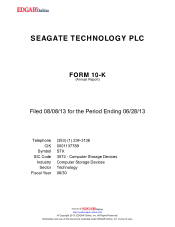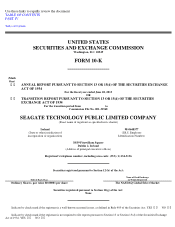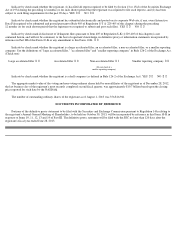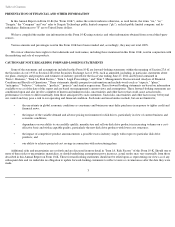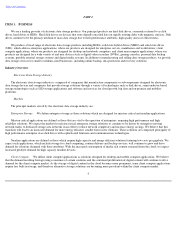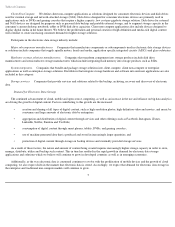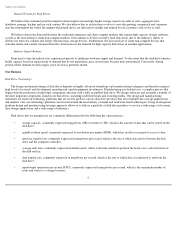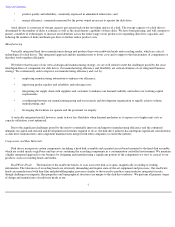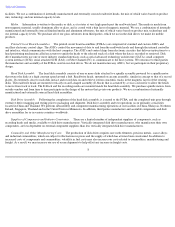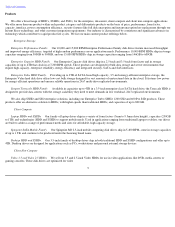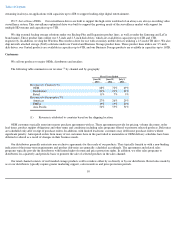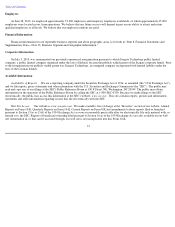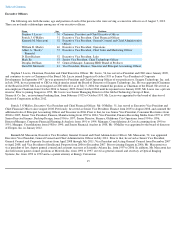Seagate 2012 Annual Report Download - page 8
Download and view the complete annual report
Please find page 8 of the 2012 Seagate annual report below. You can navigate through the pages in the report by either clicking on the pages listed below, or by using the keyword search tool below to find specific information within the annual report.
Table of Contents
Client Non-Compute. We define client non-compute applications as solutions designed for consumer electronic devices and disk drives
used for external storage and network-attached storage (NAS). Disk drives designed for consumer electronic devices are primarily used in
applications such as DVRs and gaming consoles that require a higher capacity, low cost-per-gigabyte storage solution. Disk drives for external
and NAS devices are designed for purposes such as personal data backup and portable external storage, and to augment storage capacity in the
consumer's current desktop, notebook, tablet or DVR disk drive capacities. Client non-compute applications also include devices designed to
display digital media in the home theater. We believe the proliferation and personal creation of high definition and media-rich digital content
will continue to create increasing consumer demand for higher storage solutions.
Participants in the electronic data storage industry include:
Major subcomponent manufacturers. Companies that manufacture components or subcomponents used in electronic data storage devices
or solutions include companies that supply spindle motors, heads and media, application specific integrated circuits (ASICs) and glass substrates.
Hardware storage solutions manufacturers. Companies that transform components into storage products include disk drive
manufacturers and semiconductor storage manufacturers which include integrating flash memory into storage products such as SSDs.
System integrators. Companies that bundle and package storage solutions into client compute, client non-compute or enterprise
applications as well as enterprise storage solutions. Distributors that integrate storage hardware and software into end-user applications are also
included in this category.
Storage services. Companies that provide services and solutions related to the backup, archiving, recovery and discovery of electronic
data.
Demand for Electronic Data Storage
The continued advancement of cloud, mobile and open source computing, as well as an increase in the use and reliance on big data analytics
are driving the growth of digital content. Factors contributing to this growth are the increased:
• creation and sharing of all types of digital content, such as high-
resolution photos, high definition video and movies, and music by
consumers and large amounts of electronic data by enterprises;
• aggregation and distribution of digital content through services and other offerings such as Facebook, Instagram, iTunes,
LinkedIn, Netflix, Pandora and YouTube;
• consumption of digital content through smart phones, tablets, DVRs, and gaming consoles;
• use of machine generated data that is produced and stored in increasingly larger quantities; and
• protection of digital content through storage on backup devices and externally provided storage services.
As a result of these factors, the nature and amount of content being created requires increasingly higher storage capacity in order to store,
manage, distribute, utilize and backup such content. This in turn has resulted in the rapid growth in demand for electronic data storage
applications and solutions which we believe will continue to grow in developed countries as well as in emerging economies.
Additionally, as the way electronic data is consumed continues to evolve with the proliferation of mobile devices and the growth of cloud
computing, we also expect shifts in the manner that electronic data is stored. Accordingly, we expect that demand for electronic data storage in
the enterprise and traditional non-compute markets will continue to grow.
5

